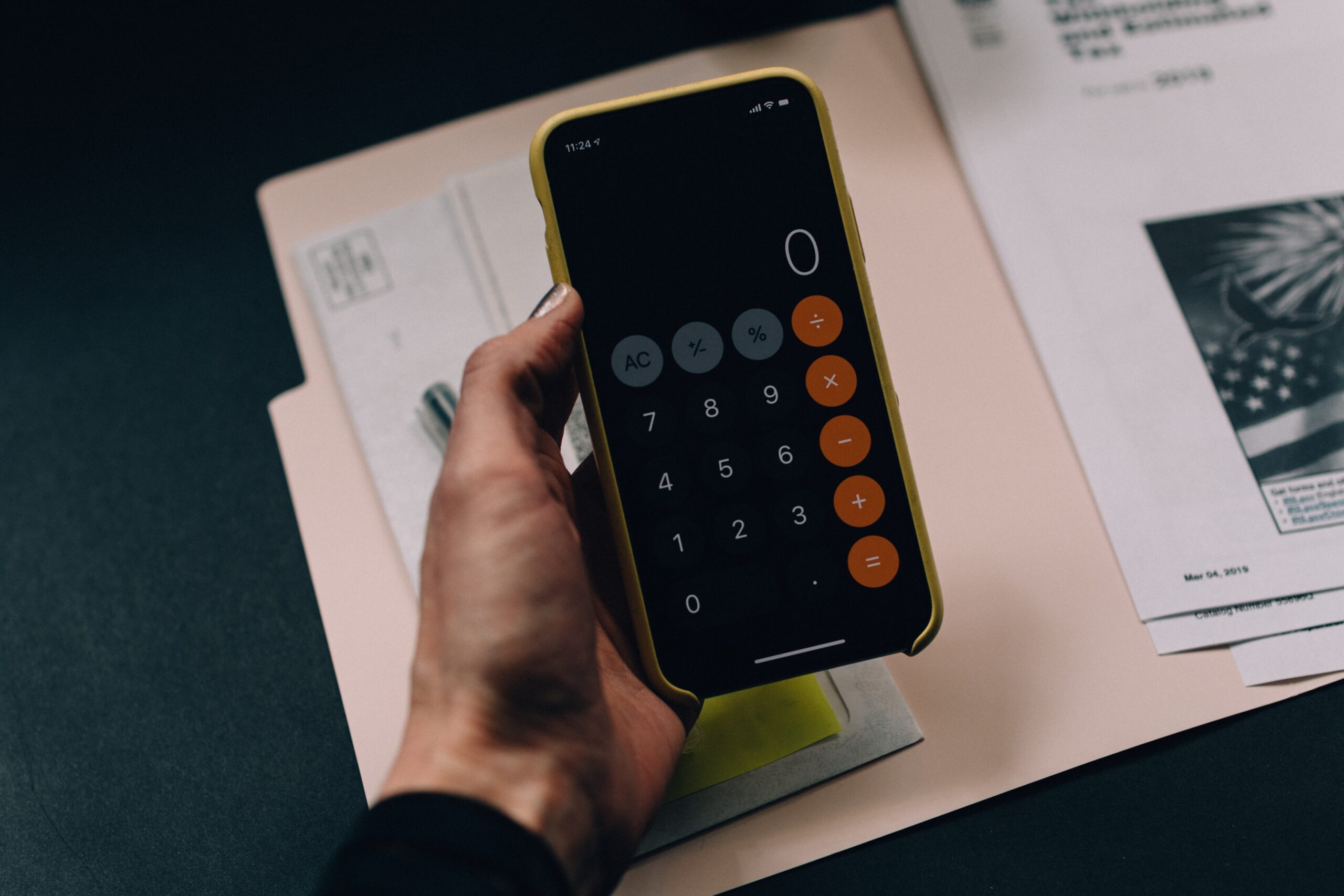When I started doing my podcast, I also started asking my followers what they want to hear. I don’t record my podcast each week for me. . .IT’S FOR YOU! That’s why this week I’m sharing about financial organization. Special thanks to Jill for asking for this topic, hopefully the tips I have below are exactly what you’re looking for.
When it comes to financial organization, what comes to mind? There are bills to pay, retirement to save for, home projects to get done (if you’re a homeowner) and ALL OF IT is a priority. Choosing what to focus on is a hard decision for anyone, especially me. Before I share what I did to become financially organized, let me preface this post:
I am not a financial expert!
I am not Dave Ramsey or Robert Kiyosaki or any of the other experts out there. I’m simply someone who has been down the road of huge mistakes, not as much money coming in as was going out and someone who hit rock bottom. When I chose to get financially organized, I started to listen to Dave Ramsey because he was the most recommended. My husband and I were at a point where we had to make a decision – do we pay our credit card or do we pay our mortgage. What I kept hearing in my head was Dave say to keep the lights on and focus on the house, the electricity and the food we feed ourselves first. That’s what we did but our credit card payment went by the wayside for months. Yes, I said months. It was not what I wanted to do, but it was what we felt like we had to do. Eventually it worked out and we were able to settle the credit card and get rid of it. But there were many mistakes made leading up to that decision, including not knowing what our finances even looked like.
While I love his process and it helped us get the theoretical snowball rolling, I follow a “Dave Ramsey-esque” method today and it works for me. Below are the things we did to start the process of getting financially organized once and for all.
Analyze Your Bank Accounts
When it come to your bank accounts, I’m referring to ALL of your bank accounts. The checking and savings accounts you have with your financial institution or bank, the credit card accounts you have and even your retirement accounts. Reviewing all your accounts matters when it comes to getting financially organized.
What I want you to do is look at the most recent month of activity. Either use a notepad and pen or a spreadsheet and write down everything you spent your money on. Note the payees, the date and the dollar amount. Once this is done, categorize everything. You may end up having categories like Eating Out or Groceries or Kid Stuff. The reason for categorizing everything is so you can physically see where you’re spending. The goal is “Less is more” in this case. When you have a lower number of payees, you most likely had less money going out the door and more money in your pocket. Hopefully.
Do this same analysis with your saving too. Note down the dates you put money in your savings account and how much. Total everything up when you’re done. You should have Total Amount Spent, Total Amount Spent Within Each Category and Total Amount Saved.
Review Your Categories
Now that you’ve analyzed your accounts, take a look at the full picture.
How many categories do you have? You may have only a few categories and you may have a lot. It all depends on how you create your categories. When I started this, I came up with Household (anything for the house), Groceries (food and beverages), Eating Out (take out and restaurant food), Clothes & Accessories, Pet Stuff and Debt. These categories still exist for me today.
What category has the largest amount of spending? Where do you spend the majority of your money? I’m not asking you to ask yourself this question to make you feel bad about yourself and your spending habits. I’m asking you to ask yourself this so you can see where your money is going.
What category has the lowest amount of spending? Where are you not spending money, but maybe need to? Again, not asking you to ask yourself this question to make you feel bad about yourself. I want you to see where you could make improvements, if possible.
Do you have a buffer? What I mean by this is your spending versus what’s actually coming in. Many in the world do not because they live pay check to pay check or for another reason. We were in this position for a bit and it was scary. Especially when an emergency situation arose.
Putting your spending and saving into categories helps you see the bigger picture. Ultimately, it can help you make decisions easier because you are showing all your cards.
Set a Bill Review and Payment Schedule
I am a firm believer that if something isn’t scheduled, it didn’t or won’t happen. That’s why we scheduled a bill review day and a payment day. If you’re wondering what these days are, they’re exactly what they sound like. On bill review days, you sit down and review your bills to know what’s coming up. On payment days, you sit down and make the payments on the bills that you can pay at that time. These days are flexible according to you and your lifestyle. You can do it weekly, a few days a week or even every day.
I’m the person in our household that manages our finances, so when we first started, I looked at our bills every few days and I paid them every Friday (when we got paid). It worked for us to really know what was coming up because we didn’t want to make decisions on the fly. Now, I just review the bills just once a week and pay them on the same day I do the review because we’re more comfortable. If you are thinking of doing the review every single day, let me offer you a word of caution. It might make you a little crazy and neurotic and it can even send you on a downward spiral emotionally and with your confidence. If you check it every day, you will see very little (if any) progress and that can be enough to make you want to give up.
When you do your bill review days, write out what needs to be paid. You can do this on a notepad or in a spreadsheet. In either way, have three columns – the due date, the payee and the amount that needs to be paid. Try to sort the bills by due date too so you can see what needs to be paid and when.
Have a Home for Your Bill Paying
Another thing I’m a huge proponent of is having a home for everything. Having one place where you put the bills you receive in the mail and keep your checkbook is more way more efficient than searching all over the house when you’re ready to send out payments. Imagine it’s pay day and you’re ready to pay bills but you cannot find your checkbook. You search and search for an hour or so only to find it in the bottom of your kid’s toy box. Yea, I did that when I was a kid. Sorry mom and dad. How much time did you just waste?! in your home, find one place for everything and it will save you so much time, energy and frustration.
I keep everything in my office and have a little caddy that holds my notepad, all the paper bills that need to be paid and our checkbook. Not only does this make it easy for me when it comes to bill review days and payment days, but it also makes it easy for my husband when he has to grab a check for the oil delivery man.
Decide What to do With All the Stubs
If you still get snail mail, you most likely receive all your bills, pay stubs and retirement account summaries the old fashioned way. Maybe you get a few electronically when the payee emails you. How do you retain all that paper and all those emails? Well, you have a few options:
- Keep it all in a filing cabinet. – Get a filing cabinet and some hanging folders and create one for every account you receive a paper stub for.
- Save the emails. – You can create a Google Drive or Dropbox account and save the emails or statements as PDFs in those accounts. If you’ve never used either, think of them like a virtual filing cabinet.
- Shred or delete them. – This might be scary but if you receive notifications via email, the payee has an online account that you can access. I know it might be scary, but you don’t necessarily need to keep these.
I have a mix of these options. I have a filing cabinet for the stubs that I receive in the mail and I have a few payees that I only access using my online account. Slowly I’m transitioning to only electronic bills, if possible, because it cuts down on the amount of paper I have in my home. Less paper means more room for the stuff you love.
Are there any other tips that you use to stay financially organized? If so, leave them in the comments below. Although I’ve used these tips for years, I’m always open to learning new ways of being productive and efficient.










One response to “Financial Organization”
[…] post is a follow up to my last post all about financial organization. When I finished that one, I felt like the story wasn’t […]